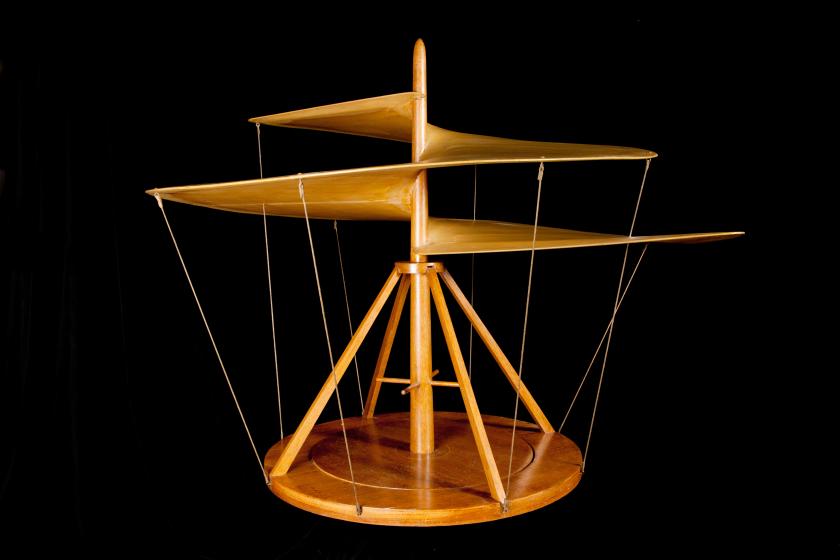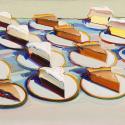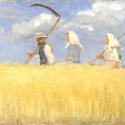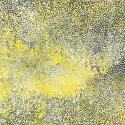Was Leonardo da Vinci (1452-1519), who straddled the arts and science in such a unique way, several hundred years before his time? Did the painter-inventor-engineer really draw the prototypes for, inter alia, the aeroplane, the motor car, the helicopter and the submarine, or were they doodles to which history has ascribed more genius than they are due? This small but interesting exhibition attempts to answer those questions as it places his mechanical works under scientific scrutiny.
This show has its origins in an exhibition in Milan in 1952 to celebrate the 500th anniversary of Leonardo's birth, and the 39 models made from his drawings of machines – many of which would have seemed fantastical in his time – are presented here. How exquisite they are, worthy of being included in an art exhibition as well as in a science museum. Actually, some of them would have a more apt place in an art show as, a note tells us, they “have no practical purpose, being fragments of existing machines, and are often incomplete or lacking in details relating to mechanical and structural parts”.
Leonardo was a superb draughtsman, and the model-makers have done him proud. My favourite, the aerial screw (main picture) is, close-up, breathtakingly beautiful. It is claimed as the first model for a helicopter, but (as with most of his ideas) Leonardo never actually built or tested it, although his notes and drawings are precise enough to indicate how the device would operate; modern scientists, however, say it would never get off the ground.
 It seems strange to think it of such a polymath, but Leonardo was, for at least a part of his career, a jobbing engineer – as a military architect for the city of Venice, and later for Cesare Borgia in Rome. And while we may think of some his greatest talents being poured into inventions, in reality he often refined or developed others' ideas – such as his weaving machines for the ruling Sforza family in Milan – trying to improve machines' efficiency or work processes.
It seems strange to think it of such a polymath, but Leonardo was, for at least a part of his career, a jobbing engineer – as a military architect for the city of Venice, and later for Cesare Borgia in Rome. And while we may think of some his greatest talents being poured into inventions, in reality he often refined or developed others' ideas – such as his weaving machines for the ruling Sforza family in Milan – trying to improve machines' efficiency or work processes.
Nature was so often his inspiration, as his diving suit, complete with webbed gloves for the diver, and his attempt at a flying-machine, based on the movement of a bird's wings in flight, demonstrate. The exhibition's curators attempt to draw a line – not entirely convincingly – between Leonardo's work and that of scientists today in their use of biomimicry in robotics and aeronautics. What is more striking is how at home some inventions – such as his armoured vehicle or his moving siege machine – might look in futuristic film franchises such as Mad Max.
The exhibition promises “games and multimedia installations” (pictured above) but children of all ages shouldn't get too excited; one game consisted of moving some pulleys and gears, and the description "multimedia" might be an exaggeration that a five-year-old used to playing with an iPad would scoff at. But on the whole this is an enjoyable experience, with much to learn, and even more to be in awe of.









![SEX MONEY RACE RELIGION [2016] by Gilbert and George. Installation shot of Gilbert & George 21ST CENTURY PICTURES Hayward Gallery](/sites/default/files/styles/thumbnail_125_x_125_/public/mastimages/Gilbert%20%26%20George_%2021ST%20CENTURY%20PICTURES.%20SEX%20MONEY%20RACE%20RELIGION%20%5B2016%5D.%20Photo_%20Mark%20Blower.%20Courtesy%20of%20the%20Gilbert%20%26%20George%20and%20the%20Hayward%20Gallery._0.jpg?itok=3oW-Y84i)





Add comment